Sidra (Tonk): A village of Meenas in Rajasthan has discovered an unlikely but effective route to government jobs.
It is through Urdu.
Almost every young person in this village in Tonk district is in a race to learn Urdu and prepare for the exam to become a government teacher.
In 2022, this Urdu fever hit a new high when resident Kalpana Meena, now 20, aced her Class 12 exams with a perfect 100 in Urdu, topping the state. But this isn’t just a one-off success story. More than 100 Urdu teachers and professors across Rajasthan are from Sidra, 85 km from state capital Jaipur. It has become a petridish that’s producing an impressive number of Urdu teachers every year.
On any given day, villagers can be seen speaking to each other in chaste Urdu or practising their vocabulary. Children sit under trees or in bylanes, poring over Urdu textbooks, enunciating words like khwab (dream), sukoon (peace), and rehmat (blessing). But the village signboards are still in Hindi and the Urdu script is limited to blackboards and books. The village hasn’t adopted Urdu as its language—it’s simply the language of opportunity to get ahead, even more than English.
There was a time when many government posts reserved for ST-category Urdu teachers went unfilled—partly because there weren’t enough qualified candidates. Now, Sidra, a village of over 6,000 people, has turned this gap into its own fast track for cracking India’s universal government job ambition.
Its success has earned Sidra the nickname “Urdu gaon” in the region and has inspired nearby villages to introduce Urdu in their schools too.
This didn’t happen overnight. It took years of persistence for Sidra to reach this point and produce students like Kalpana, the first in the village to score a perfect 100.
“Urdu came as a boon to our village. The entire village was dependent on farming but Urdu fulfilled our dream of government jobs. I never learned to read but the younger generations are trying their best to get jobs by studying Urdu,” said Sidra sarpanch Ramsai Meena, who is in his 70s.
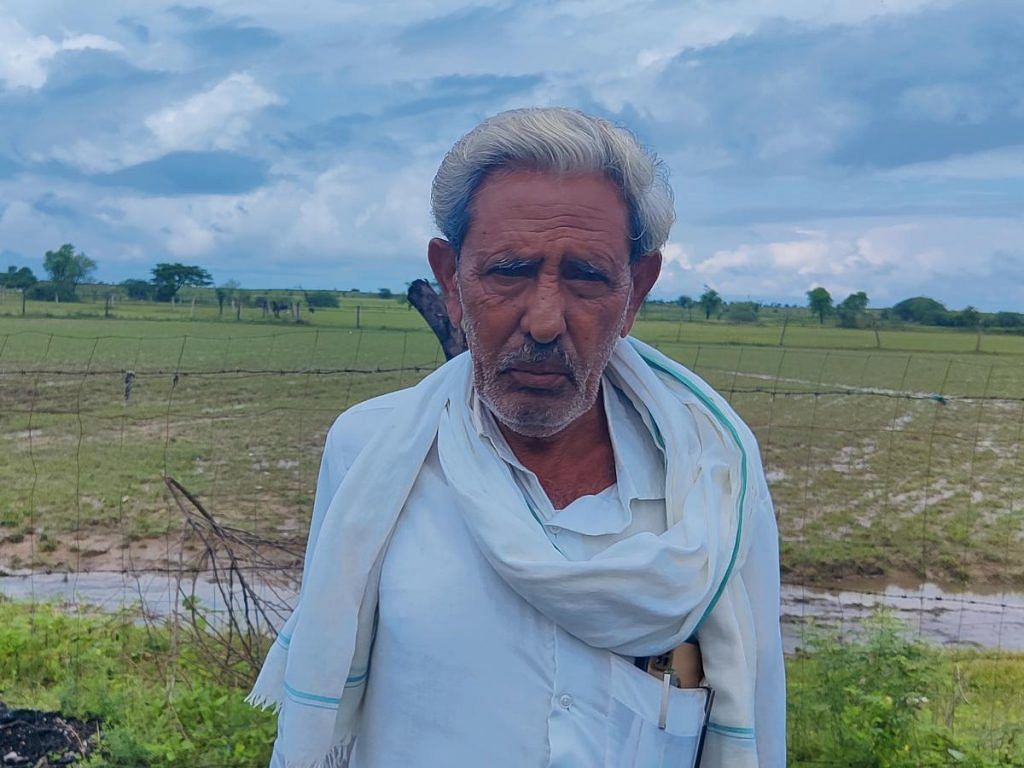
Kalpana, now studying for a bachelor’s degree in Urdu, is set to join the many scholars from Sidra who have become teachers in the language.
For Ramphool Meena, Kalpana’s father, the decision to have her study Urdu was obvious. It’s become a tried-and-tested formula for upward mobility
“When my daughter entered Class 11, I asked her to take Urdu as a subject,” said Ramphool, a farmer, sitting on a wooden cot in the courtyard of his house. “Many people in our village got government jobs after studying Urdu, and are respected for it. I want the same for my daughter.”
In 2022, Rajasthan recruited 800 teachers across various subjects, and 40 of them were from Sidra, most for Urdu—the highest number from any village in the state.
Also Read: Rajasthan’s 17 new districts are running from mandis, hostels, schools. A logistical mess
Making of an Urdu village
In the village school, students start learning Urdu from Class 6 onwards. The blackboards are filled with intricate Urdu script, while textbooks and worksheets feature verses from great poets like Firaq Gorakhpuri, Mirza Ghalib, and Mir Taqi Mir. Children proudly display their Urdu handwriting skills to one another. The importance of Urdu is clear—it’s the first subject of the day for Class 12 students.
“I have been studying Urdu for a few days. It feels a little new but I am enjoying it,” said Abhay Meena, a Class 6 student, his school bag slung over one shoulder as he walked through the school’s gate.
From Class 6 to 8, students are taught to read and write Urdu—mastering the 38 letters, along with basic nouns and verbs. In Class 9, they’re introduced to poetry forms such as ghazals, qasidas, and marsiyas, along with novels and short stories.
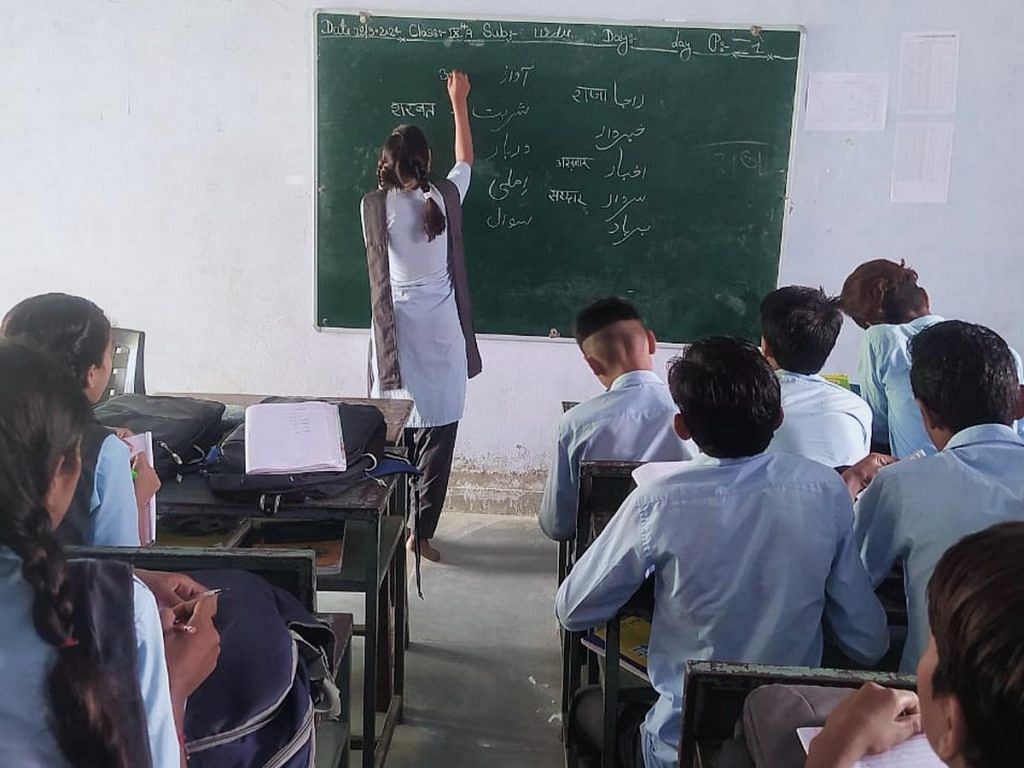
Today, out of 460 students in Sidra’s school, 300 are studying Urdu—160 from Classes 6 to 10, and 92 from Classes 11 and 12. Two teachers currently handle the Urdu classes—lecturer Gangadhar Meena and upper primary teacher Sopal Chaudhary.
But Sidra’s love affair with Urdu didn’t begin at home. Back in the 1990s, the village school only taught up to Class 8, so children travelled 10 kilometres to Newai, also in Tonk district. It was there, at the Government Senior Secondary Boys School, that Urdu was introduced as a third language in 1994.
Teacher Shahana Madani recounted some Hindu students asking: “Are you trying to make us Muslims by teaching Urdu?” Her response would be sharp: “Will learning English make you British?”
Tonk, as a former princely state ruled by nawabs, has long been steeped in Urdu literature and poetry—so much so that it’s called the “Lucknow of Rajasthan”. It’s also home to the Maulana Abul Kalam Azad Arabic Persian Research Institute, a library and museum that holds the world’s largest copy of the Quran, along with rare Urdu manuscripts.
Introducing Urdu into the school curriculum in Newai wasn’t easy, though. The effort was led by teacher Shahana Madani, who had been appointed to teach Urdu but ended up taking history lessons for two years due to resistance from students and staff.
“Even the school principal didn’t want Urdu to be taught,” said Madani, now retired.
She also recounted some Hindu students asking: “Urdu padhake musalman banaoge kya?” (Are you trying to make us Muslims by teaching Urdu?). Her response would be sharp: ‘Angrezi padh ke kya angrez ban jaoge?’ (Will learning English make you British?).
Despite the pushback, Urdu finally found its way into the syllabus, with Madani in charge.
Attitudes shifted when students who studied Urdu began landing government jobs, said Krishna Gopal Meena, 40, one of the first students from Sidra to study Urdu in Newai.
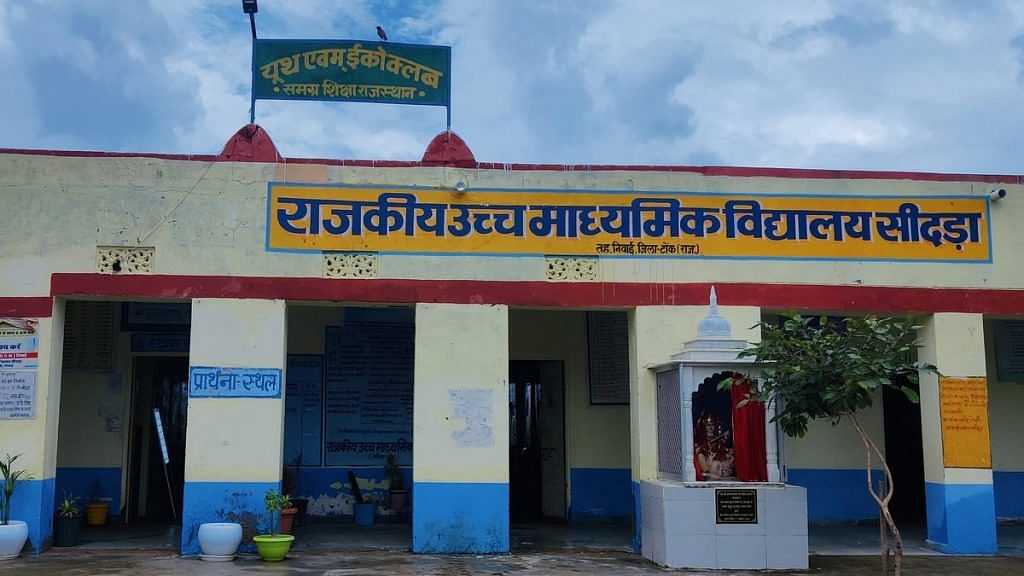
“In Rajasthan, the ST-category seats for Urdu teachers used to remain vacant. But when villagers realised the job opportunities, the interest in Urdu started moving forward rapidly,” said Krishna Gopal, now an assistant professor of Urdu at Government PG College, Tonk.
In 2013, determined to build its own Urdu ecosystem, Sidra’s school management committee got Urdu included as a third language. The entire village rallied behind the effort. When the school didn’t have a designated teacher for three years, local graduates stepped in to take classes.
The first ‘official’ Urdu teacher, Asma Bano, joined in 2016 and taught for six years until her transfer in 2022.
Initially, Urdu was only offered to Classes 11 and 12, but in 2020, it was expanded to start from Class 6.
“I have never seen so much love for Urdu before,” school principal Birbal Meena said. “Even the parents of the children come to us and ask us to teach them Urdu.”
Sidra has become the region’s Urdu ‘influencer’, and it’s ready to flaunt it. Other villages, like Devri 1.5 km away, are following it and trying to introduce Urdu in schools —not out of a love for the language, but with the same practical mindset.
Girls leading the way
In Sidra, it’s the girls who are driving Urdu’s rise. About 60 per cent of the students learning Urdu are girls, said principal Meena, who has seen the language become more popular than English since he joined in 2018.
Earlier, most girls stopped their education after Class 10, the principal noted. But now, with Urdu offering a viable career path—especially in teaching, seen as a ‘woman-friendly’ profession—many parents are encouraging their daughters to continue their studies.
“Girls are showing more interest in Urdu than boys,” he added.
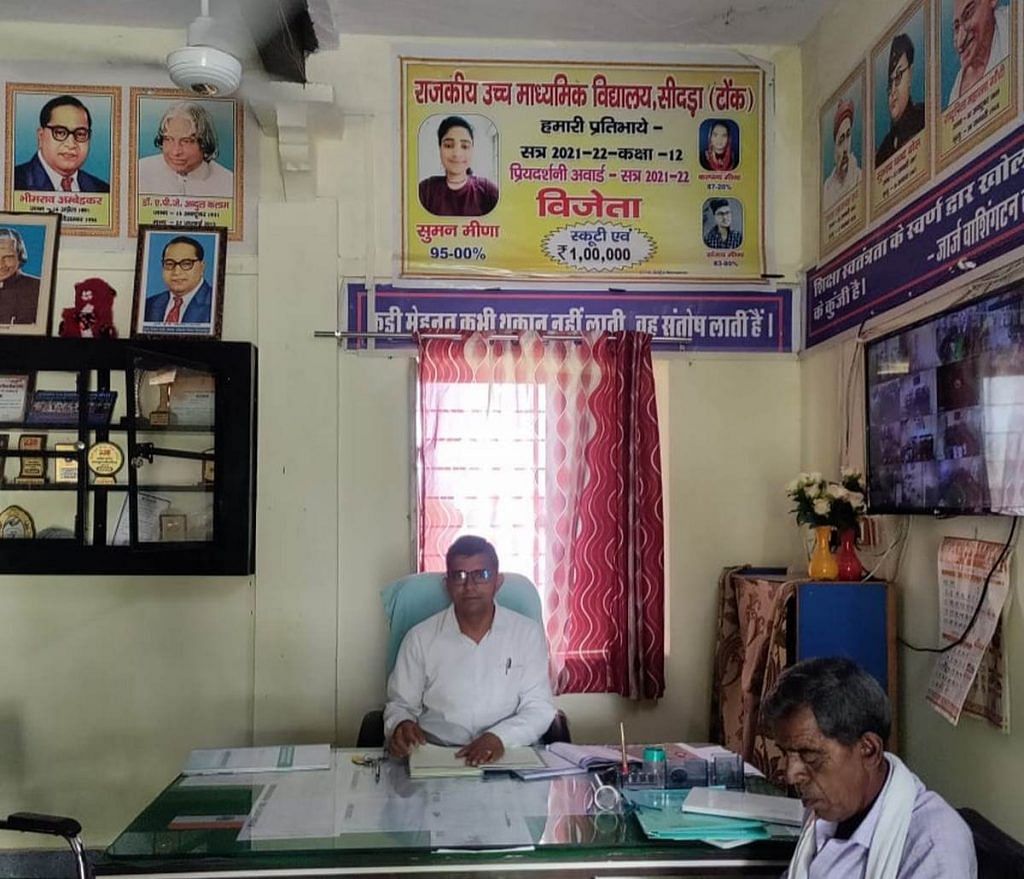
Unlike the girls, many boys are also setting their sights on other government jobs in the Railways, Rajasthan Police, or the Army. But those fields don’t have the same job track record as Urdu does in Sidra.
The results speak for themselves.
“Sidra has the highest number of students selected as teachers in all of Tonk district,” said principal Meena, beaming proudly.
In 2022, Rajasthan recruited 800 teachers across various subjects, and 40 of them were from Sidra, most for Urdu—the highest number from any village in the state. Every year, for a decade, there’s been a new Urdu milestone to celebrate. In 2013, for instance, out of 26 ST posts for Urdu teachers, 11 were filled by Sidra youth. And in 2016-17, the only ST seat for an Urdu professor in the entire state went to a student from Sidra.
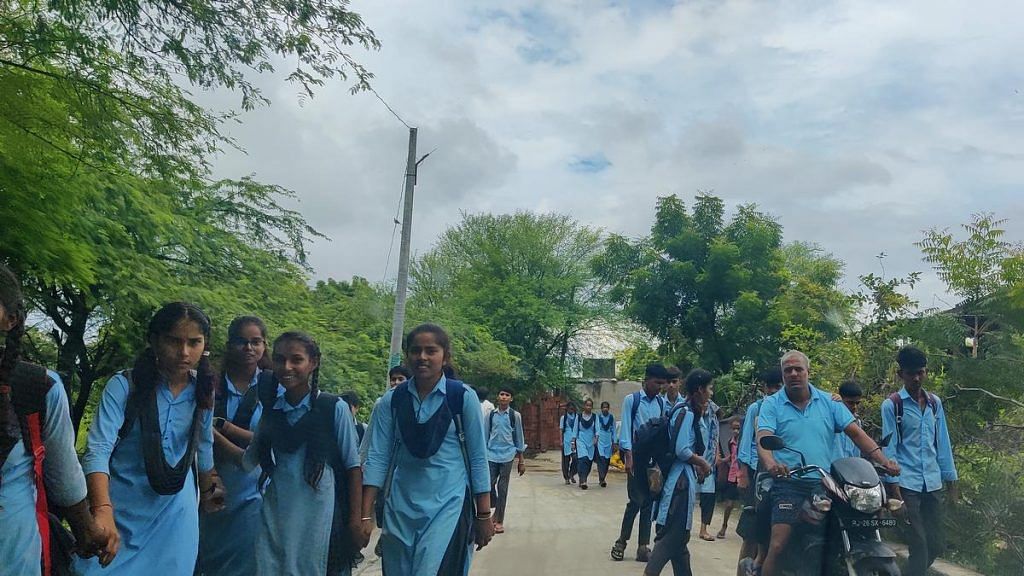
Professor Krishna Gopal Meena claimed that more than 250 Urdu teachers in Rajasthan come from the Hindu community. From Sidra alone, he added, there are two professors, 14 school lecturers, 30 senior teachers, and more than 60 upper primary teachers, along with a few madrasa teachers.
But scoring high marks and qualifying as a teacher doesn’t guarantee a job.
Abundant vacancies, few jobs
More than two dozen students in Sidra are currently doing their B.Ed and waiting for the next round of teacher recruitment. Among them is Kamlesh Meena, who completed his BA from Tonk last year and is now working toward his teaching qualifications.
“Students here don’t have to think much about their future anymore. A path has been set—study Urdu and teach Urdu. That’s why very few people go into other fields or subjects. Urdu has become the identity of this village,” Kamlesh said.
However, posts for Urdu teachers across Rajasthan have been vacant for years. From local MLAs to the Urdu Teachers Union, there have been repeated calls to fill these positions.
In 2022, Congress MLAs Amin Kagzi and Wajid Ali even challenged their own government, writing a letter to then Chief Minister Ashok Gehlot, asking why only 309 posts had been sanctioned when there were 2,000 vacancies for Urdu teachers. Little seems to have changed since.
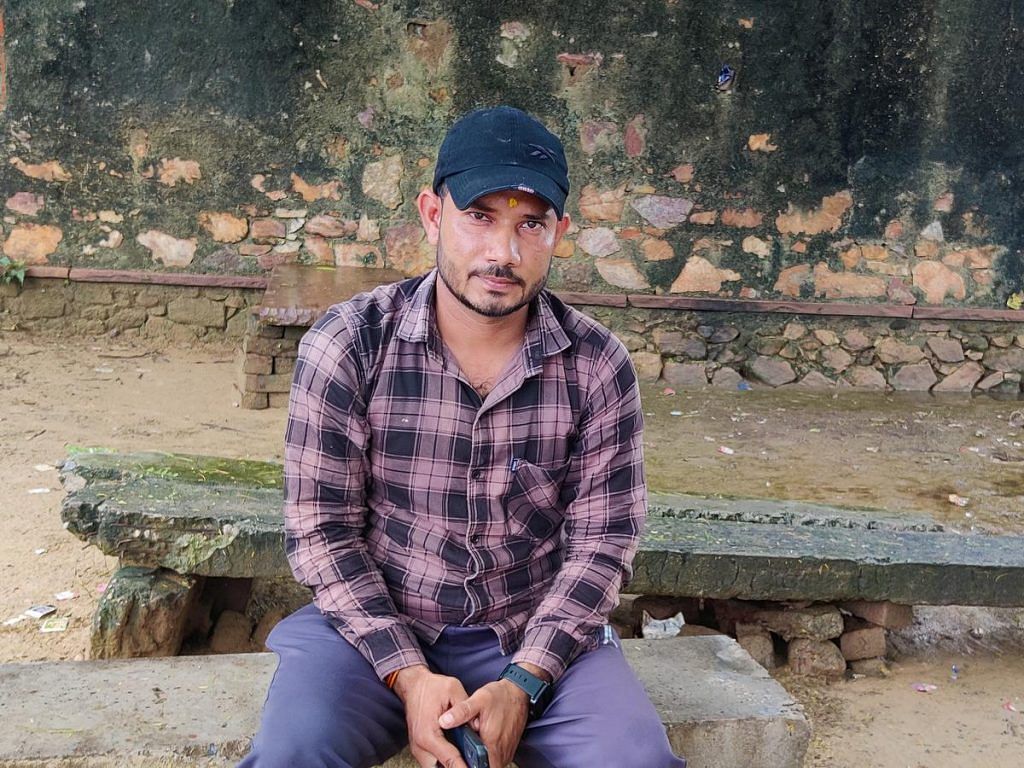
As of now, 6,957 primary and senior secondary schools offer Urdu. However, at the primary level, out of 79 senior teacher posts, only 49 are filled. Of 446 sanctioned posts for junior teachers, only 330 are occupied. The situation is similar in secondary education— 140 of 458 lecturer posts are vacant, while 368 of 1,082 senior teacher positions remain unfilled. For junior teachers, 449 of 1,034 teaching posts are vacant.
But it’s not just the vacancies causing concern—questions are also being raised about where Urdu teachers are posted.
The state recognises four minority languages—Urdu, Sindhi, Punjabi, and Gujarati. According to the Rajasthan Education Department’s policy, classes in these languages can be introduced in any school where at least 10 students opt for them.
This language has grown up in India. Premchand, a great writer of Hindi, also wrote in Urdu. This is the language of India and not just of Muslims
-Krishna Gopal Meena, Urdu professor in Tonk
Contrary to the rule, however, some schools have appointed Urdu teachers even where there are barely any students, Rajasthan Education Minister Madan Dilawar told ThePrint.
“Urdu teachers who are employed to teach just four children should be removed. They can go to other places and teach other subjects as well,” he added.
In 2023, data presented in Lok Sabha showed a requirement for 1,36,176 Urdu teachers in government and other schools. Yet, hundreds of posts remain vacant across every state.
But it’s not just schools struggling with Urdu staff shortages.
“The same situation exists in the state universities and colleges as well,” said Dr Shamshad Ali, president of the Urdu Shikshak and Lecturer Sangh of Rajasthan. “There should be 15 teachers in the Urdu department of Rajasthan University but currently only one is working.”
Also Read: Delhi’s Urdu Bazaar is dying. Mughlai sells, not Manto & Mirza Ghalib
No Muslims, but an Urdu influencer
Even with the spectre of low recruitment, Urdu is both drawing students to Sidra and opening doors far beyond the village.
“Students come from 10-15 kilometres away to study Urdu here,” said principal Birbal Meena, adding that two students from the school’s 2019-20 batch are now pursuing their MAs in the national capital—one at JNU and the other at Delhi University.
What makes Sidra’s story even more remarkable, according to Meena, is its demographic makeup.
“Not a single Muslim child studies here,” he said.
Kamal Meena, an Urdu teacher originally from Sidra but now teaching in Jhalawar, echoed this: “In most places, it’s mostly Muslim students studying Urdu. But in Sidra, it’s entirely Hindus.”
One of Sidra’s success stories, assistant professor Krishna Gopal Meena is among the five faculty members in the Urdu department of Tonk’s Government PG College—three are Hindu, two are Muslim. Most of his students are Muslim, but for Krishna Gopal, Urdu has always transcended religion.
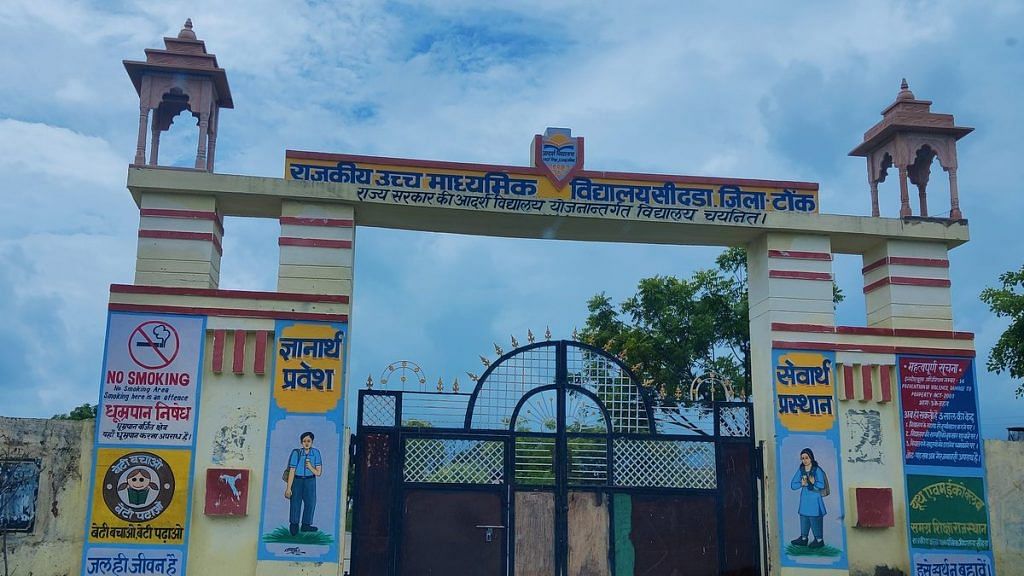
“This language has grown up in India,” he said, speaking in Hindi. “Premchand, a great writer of Hindi, also wrote in Urdu. This is the language of India and not just of Muslims.” He added that his Muslim students don’t care that their Urdu professor is a Hindu.
Though Sidra has no Urdu signboards— the sarpanch claims they just never thought of it—the village council is planning to celebrate two decades of progress with an Urdu festival early next year. There will be poetry and ghazal sessions, and all the village’s Urdu teachers will be honoured.
Sidra has become the region’s Urdu ‘influencer’, and it’s ready to flaunt it. Other villages, like Devri 1.5 km away, are following it and trying to introduce Urdu in schools —not out of a love for the language, but with the same practical mindset.
In 2021, Turkiya village, located a few kilometres away from Sidra, introduced Urdu in its school.
“Sidra has set an example and record in Tonk by producing so many Urdu teachers,” said Gopal Meena, a resident of Turkiya. Their success stories reached us and we are trying to follow them. In today’s competitive job market, it’s an easy way to get into a government job.”
(Edited by Asavari Singh)







Urdu is the ticket to Islamic fundamentalism and Jihadi terrorism.